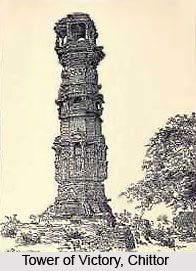 Vishnu purana says that Vasudev was the minister of the last king of the Sunga dynasty Devabhuti. Vasudev founded the kanva dynasty by killing Devabhuti. It was also a Brahman dynasty, which ruled from 72 B.C. To 28 B. C.
Vishnu purana says that Vasudev was the minister of the last king of the Sunga dynasty Devabhuti. Vasudev founded the kanva dynasty by killing Devabhuti. It was also a Brahman dynasty, which ruled from 72 B.C. To 28 B. C.
Puranas describe four kings of Kanva dynasty. Vasudev ruled for 9 years. After him Bhumimitra ruled for 14 years thereafter Narapana and Susharma reigned for 10 and 12 years respectively. Thus the Kanvas ruled for a total of 45 years
The empire of the Kanvas was smaller as compared to those of the Sungas. The Greeks had established their rule in the Punjab, the Mitras had established their rule over a large portion west of plain of the Ganges. Vidisa was still under the Sungas probably the rule of Kanvas was limited to the Magadha. They had also taken upon themselves the task of the revival of the Brahmanism.
The puranas give the following account. "He i.e. Vasudeva, the kanvayana, will be king for 9 years. His son Bhumimitra will reign 14 years. His son Narayana will reign 12 years. His son Susaiman will reign 10 years. These are remembered the Sungabhritya Kanvayana kings these four Kanva brahmas will enjoy the earth; for 45 years they will enjoy this earth. They will have the neighboring kings is subjection and will be righteous. In succession to them the earth will pass to the Andhras." According of Dr. Smith, the reign of the Kanvas lasted from 73 B.C. To 28 B.C. whereas according to Ray Chaudhri it lasted from 75 B.C. To 30 B.C. However it is not known as to which particular Andhra king uprooted the Kanvas. The conquest of the Andhras over Magadha was not a permanent one. No inscriptions or the coins of the Andhra kings are found in Magadha. All the Andhra kings called themselves as `Dakshinapathapati` i.e. lord of the deccan. Thus it appears that they ruled over Magadha for some time. After them, the Magadha was ruled by petty kings about whom nothing can be known particularly.



















